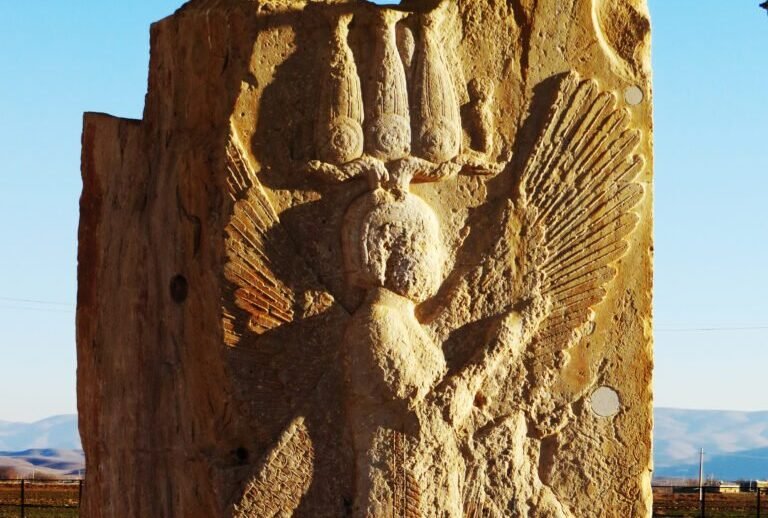Contenus
ToggleIn short
Cyrus the Great Day (Persian: روز کوروش بزرگ, romanized: ruz-e kuroš-e bozorg) is a holiday Iranian unofficial which takes place on the seventh day of Aban, the eighth month of the Hijri solar calendar (October 29 on the Gregorian). calendar), to commemorate Cyrus the Great, the founder of the ancient empire Persian Achaemenid.

The day of Cyrus the Great, a reminder of Achaemenid hegemony
Cyrus on the Big Day is an invented tradition introduced in the early 2000s on the Internet and social networking sites. According to some historical records, October 29 was the day Cyrus entered Babylon after the fall of the Neo-Babylonian Empire at the hands of the Persians Achaemenids during the Battle of Opis. The holiday is observed by Iranian nationalists and monarchists to pay homage to Iran's pre-Islamic history.
The celebrations are not official, and the holiday is not designated on any official calendar, neither on the Iranian nor on the UNESCO calendars. There have been calls for the government Iranian recognize the day at the official level. In 2017, Bahram Parsaei, the representative of the Shiraz electoral district in the Iranian parliament, openly called for the state to recognize and observe the holiday.
Cyrus II de Perse (c. 600–530 av. J.-C.; vieux persan : 𐎤𐎢𐎽𐎢𐏁 Kūruš), communément appelé Cyrus le Grand et également appelé Cyrus l’Ancien par les Greeks, fut le fondateur de l’empire achéménide, le premier empire perse. Sous son règne, l’empire englobait tous les États civilisés précédents de l’ancien Proche-Orient, s’est considérablement étendu et a finalement conquis la majeure partie de l’Asie occidentale et une grande partie de l’Asie centrale.
Stretching from the Mediterranean Sea and the Hellespont in the west to the river Industrial in the east, the empire created by Cyrus was the largest the world had ever seen. At its maximum extent under its successors, the Achaemenid Empire extended from parts of the Balkans (Eastern Bulgaria-Paeonia and Thrace-Macedonia) and from Southeast Europe proper in the west to the Indus Valley in the east.
The reign of Cyrus lasted about thirty years; his empire took root with his conquest of the Middle Empire followed by the Empire Lydian and ultimately the Neo-Babylonian Empire. He also led an expedition to Central Asia, which resulted in major campaigns that were described as having "subdued all nations without exception."
Cyrus did not venture into Egypt and is believed to have died in battle fighting the Massagetae, an ancient nomadic tribal confederation of eastern Iran, along the Syr Darya in December 530 BC. However, Xenophon claimed that Cyrus did not die in battle and returned again to the Achaemenid ceremonial capital of Persepolis. He was succeeded by his son, Cambyses II, who managed to conquer Egypt, Nubia and Cyrenaica during his short reign.
Cyrus is well known for respecting the customs and religions of the lands he conquered. He played an important role in the development of the system of a central administration in Pasargadae governing the satraps in the border regions of the empire, which operated very efficiently and profitably for both rulers and subjects.
L’Édit de Restauration, une proclamation attestée par un sceau-cylindre dans lequel Cyrus autorisait et encourageait le retour des Israélites en Terre d’Israël après sa conquête de l’Empire néo-babylonien, est décrit dans la Bible et a également laissé un héritage durable sur la religion juive en raison de son rôle dans la fin de la captivité babylonienne et dans la facilitation du retour juif à Sion. Selon Ésaïe 45: 1 de la Bible hébraïque, Dieu a oint Cyrus pour cette tâche, le qualifiant même de messie; Cyrus est le seul personnage non juif de la Bible à être vénéré à ce titre.
Cyrus est également reconnu pour ses réalisations dans les domaines des droits de l’homme, de la politique et de la stratégie militaire, ainsi que pour son influence sur les civilisations orientales et occidentales. L’influence achéménide dans le monde antique s’étendrait finalement jusqu’à Athènes, où les Athéniens de la classe supérieure ont adopté des aspects de la culture de la classe dirigeante de la Perse achéménide comme les leurs.
A native of Persis, roughly corresponding to the current Iranian province of Fars, Cyrus played a crucial role in defining the national identity of modern Iran. He remains a cult figure among modern Iranians, his tomb serving as a place of reverence for millions.
Social networks
Aujourd’hui, les Iraniens commémorent Cyrus le Grand. Cette fête est née début 2000 via Internet. D’après certains documents historiques, le 29 octobre était le jour où Cyrus est entré à Babylone après la chute de l’empire néo-babylonien aux mains des Perses achéménides lors de la bataille d’Opis. #mythologie #mythe #légende #calendrier #29octobre #iran #CyrusTheGreat
Picture
